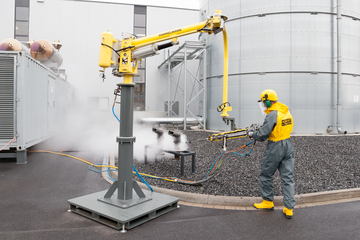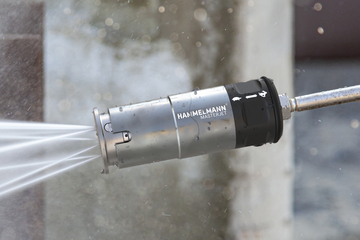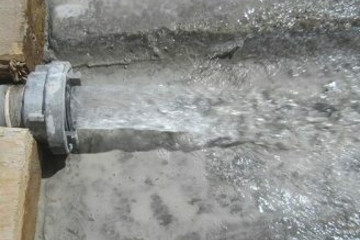Removal as a process for maintenance and refurbishment
When renovating and maintaining structures, buildings, monuments and facades, it is not uncommon to be faced with the challenge of having to remove damaged concrete in order to re-shutter these areas in the further course of the work and then pour new concrete. With water jet systems, concrete can be removed layer by layer up to the complete exposure of the reinforcement. Systems can be combined and adjusted in such a way that different water jet strengths are possible and a correspondingly large or small amount of material can be removed at once. A spot-jet nozzle or a MASTERJET rotor jet can be used for this purpose.High-pressure systems and application systems from Hammelmann form a complete package for cost-effective operation.
- Layer by layer removal of various concrete layers
- Gentle, precise exposure of the reinforcement up to the breakthrough of the surface
- Derusting and decoating of surfaces and substrates and protecting them from corrosion
- Removal of particularly hard or thick deposits
- Renovation of wind turbines / Spot removal of damaged concrete
Gentle, pinpoint exposure of the reinforcement up to the breakthrough of the surface
Gentle exposure of iron or steel reinforcements as well as structural steel meshes is a major advantage when processing concrete with modern water jet systems. In this process, only the damaged concrete is removed until the reinforcement is partially or completely exposed. The steel remains completely undamaged after exposure and the surface to be processed is optimally prepared for further work steps. Water jetting also enables precise work on specific areas of a concrete surface. This enables precise exposure and even complete breakthroughs in the wall.
Gentle and precise work without damaging the reinforcing bars.
No vibrations on adjacent surfaces.
Adjacent surfaces are not damaged.
No chemical loads on the surface.
No thermal stress on the surface.
Less wear as no caulking tools are used.
Our product solutions
-
Configure your high pressure spray gun for your daily challenges. Available in mechanical, electrical and bypass versions and a variaty of accessories.
-
JETBOYS are ergonomic working tools in various configurations for fatigue-free water jetting - adjustable for a wide range of working positions.
-
The JETMASTER is a highly flexible and universally applicable high-pressure robot. For cleaning, roughening and removing a wide variety of substrates.
-
JETMATES are ergonomic, free-hanging working tools that can clean in all directions. Safe and less physical stress on the body thanks to recoil-free operation.
-
Our proven MASTERJET rotor jet and other manual versions are versatile and can be combined with many water tools - lightweight, compact, effective.
-
Save costs and valuable resources with our mobile containers for water treatment and sludge dewatering in a compact overall system on site.





















